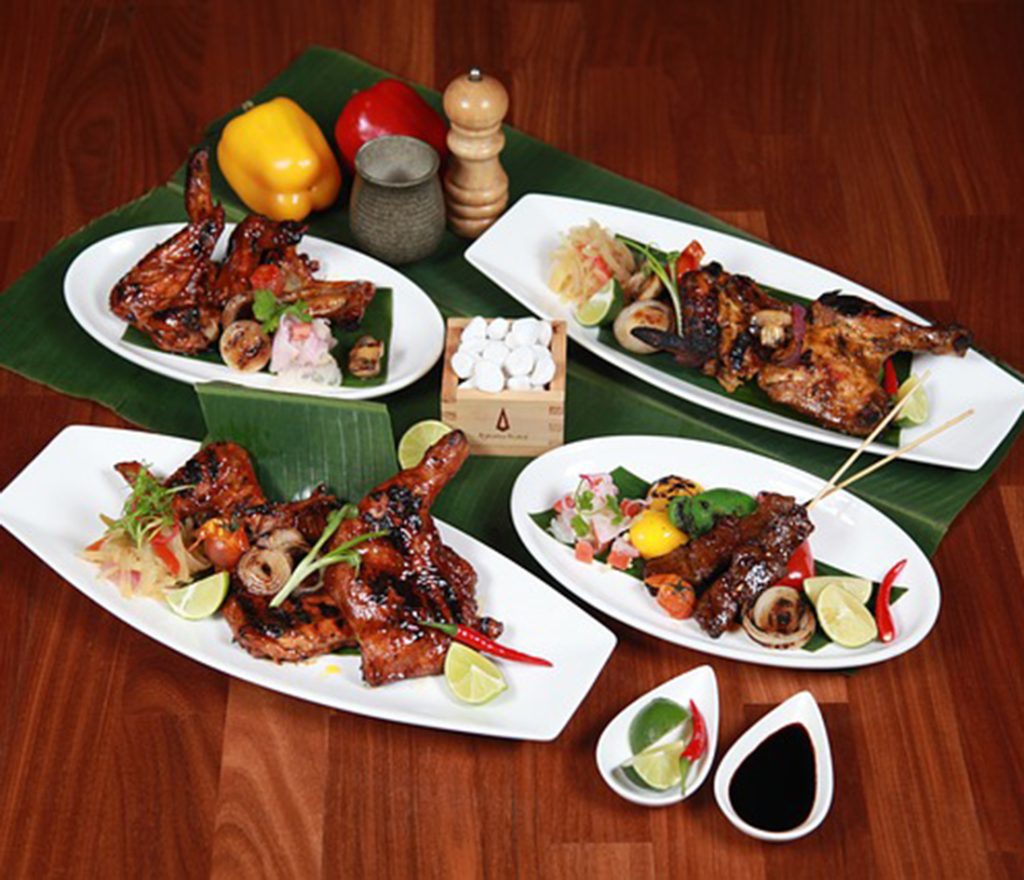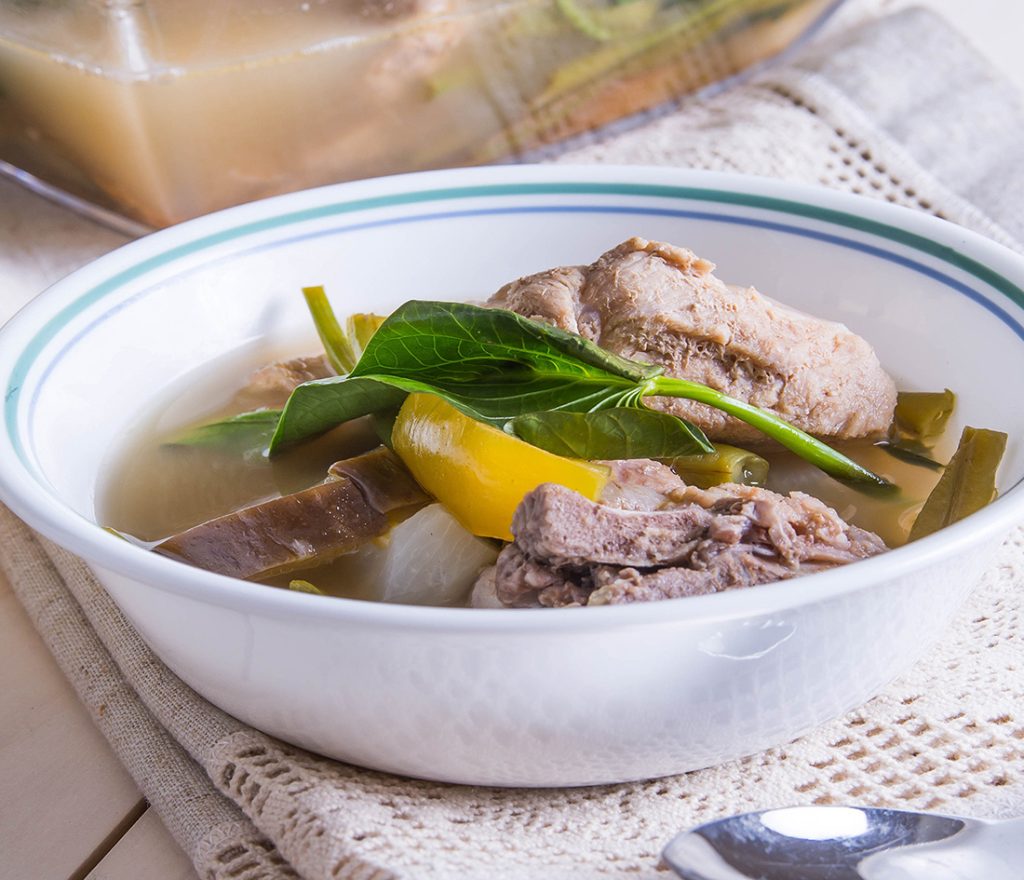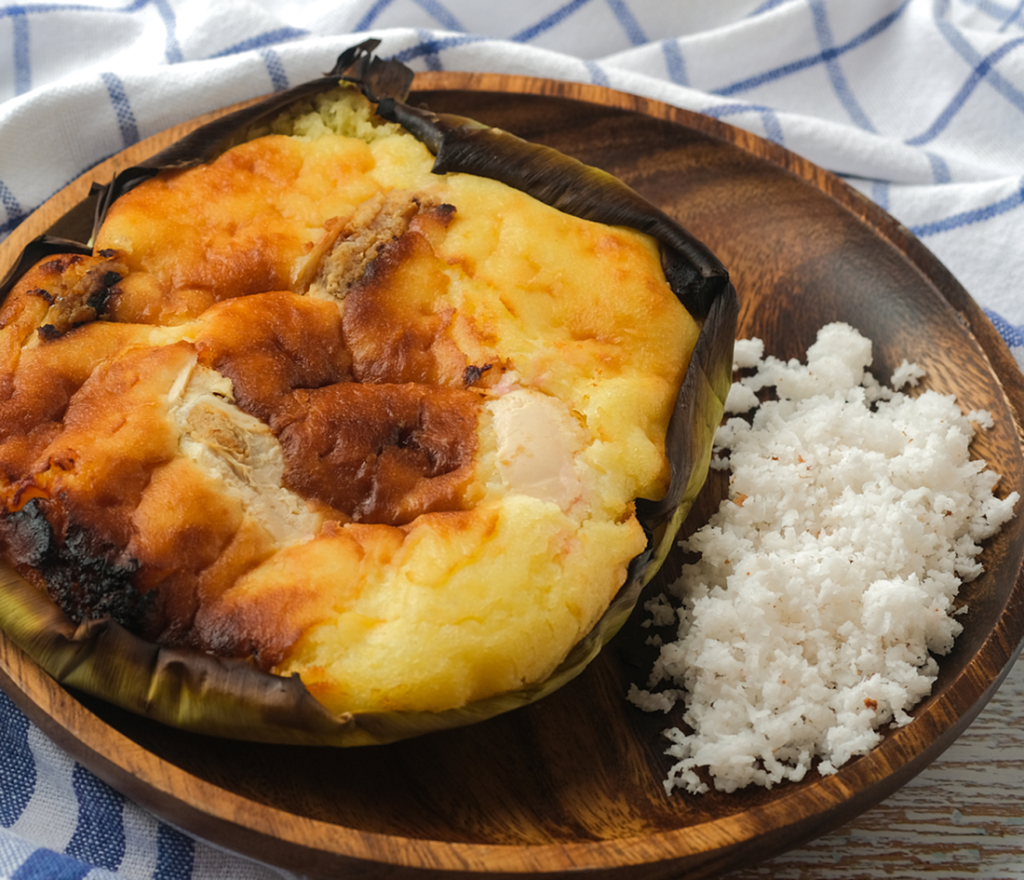
Manila, the vibrant capital of the Philippines, is not only a bustling metropolis but also a gastronomic treasure trove of traditional Filipino cuisine.
1. Adobo: The Heart of Filipino Cuisine:
Kickstart your culinary adventure with Adobo, often considered the Philippines’ national dish. This iconic dish features tender meat, typically chicken or pork, marinated in a savory blend of soy sauce, vinegar, garlic, and spices, then simmered to perfection. The result is a mouthwatering and slightly tangy masterpiece that’s a true Filipino classic.
2. Sinigang: A Tangy Delight:

Sinigang is a beloved Filipino sour soup that tantalizes taste buds with its tangy flavors. Made with tamarind, tomatoes, and an array of vegetables, Sinigang can be prepared with shrimp, pork, or fish. The unique interplay of sour and savory notes makes it a refreshing and comforting choice.
3. Kare-Kare: A Hearty Stew:
Kare-Kare is a hearty Filipino stew that boasts a creamy peanut sauce and oxtail as its centerpiece. It’s traditionally served with bagoong, a fermented shrimp paste, and a medley of vegetables. The complex textures and rich flavors make Kare-Kare a true Filipino delicacy.
4. Lechon: The Roast King:
Lechon is the crown jewel of Filipino celebrations. It involves roasting a whole pig until the skin becomes irresistibly crispy and the meat incredibly tender. Savoring a succulent serving of Lechon is a gastronomic experience you won’t soon forget.
5. Pancit Canton: Noodle Extravaganza:
Pancit Canton is a Filipino stir-fried noodle dish that’s a flavor explosion. It combines a variety of vegetables, meat, and soy sauce to create a delightful symphony of tastes and textures.
6. Halo-Halo: A Sweet Symphony:
To satisfy your sweet tooth, treat yourself to Halo-Halo, a beloved Filipino dessert. This delightful concoction includes crushed ice, an assortment of sweet ingredients like jellies, fruits, and beans, all topped with leche flan (caramel custard) and ube (purple yam) ice cream. Mixing and matching the components is all part of the fun.
7. Bibingka: Rice Cake Delight:

Bibingka is a traditional Filipino rice cake, often savored during the Christmas season. Made from rice flour and coconut milk, it boasts a soft, slightly sweet texture and is typically garnished with salted egg and grated coconut.
8. Balut: A Unique Culinary Adventure:
For the adventurous palate, trying Balut is a must. Balut is a fertilized duck embryo that’s boiled and enjoyed as a snack. Despite its unconventional nature, it’s considered a Filipino delicacy and is surprisingly flavorful.
9. Street Food Exploration: Sidewalk Delights:
Stroll through the bustling streets of Manila and sample street food classics like fish balls, kwek-kwek (quail eggs), and isaw (grilled chicken or pork intestines). These affordable and flavorful snacks are an integral part of Filipino street cuisine.
10. Savoring Manila’s Culinary Tapestry:
Manila’s traditional cuisine is a reflection of the Philippines’ rich cultural heritage. From savory stews to sweet delights, the city’s culinary offerings are a feast for the senses. Embark on a culinary voyage in Manila, savoring the flavors of Filipino tradition, and creating unforgettable memories along the way.





